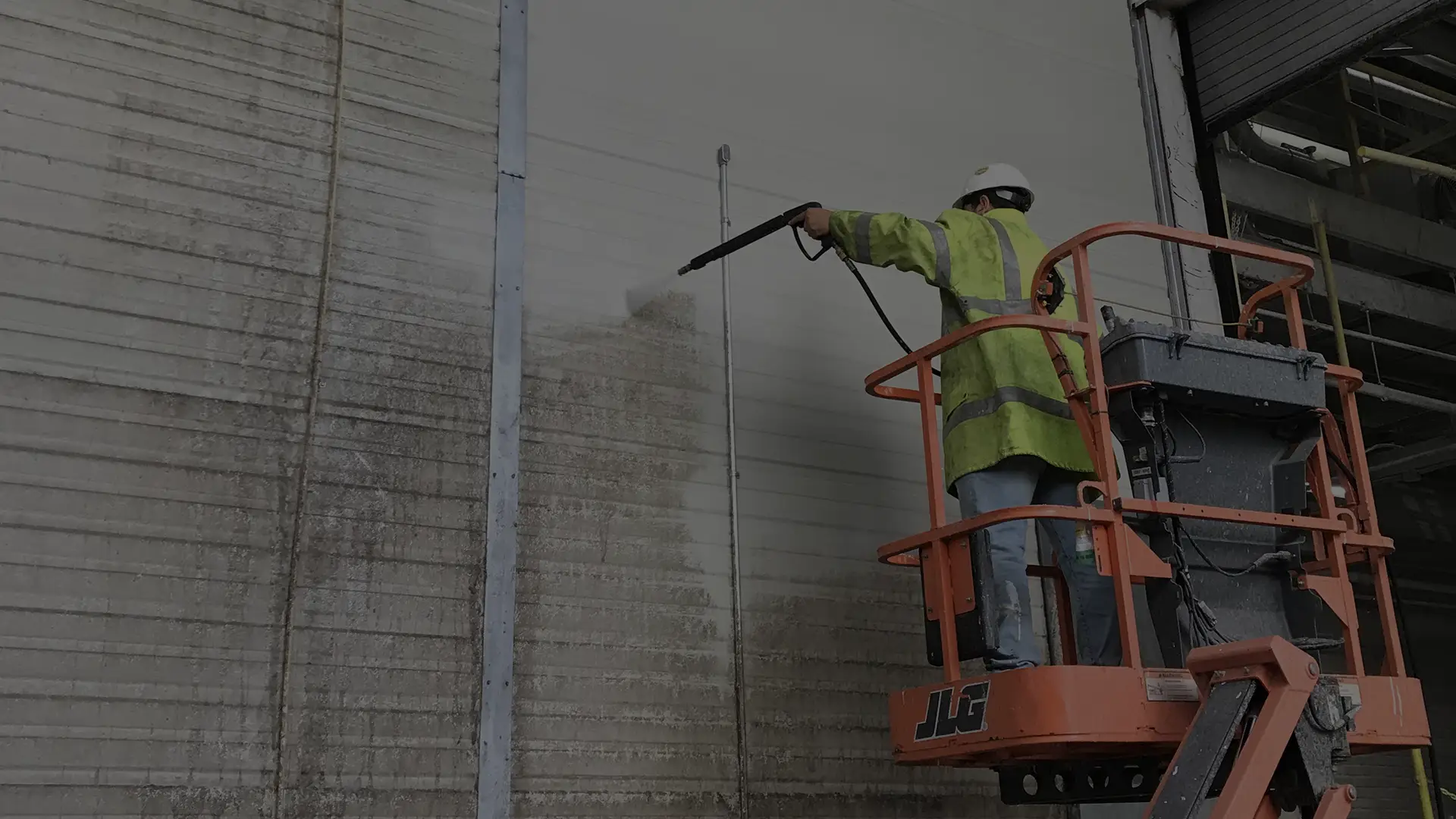Our Wet Washing Services
What is Wet Washing?
Wet washing in industrial settings is a method of cleaning equipment, machinery, and surfaces in an industrial setting that involves water and cleaning solutions. The process consists in applying water and cleaning solutions under pressure to remove dirt, grime, and other contaminants from the surfaces of the equipment, machinery, and structures.
Wet washing is typically done by hand or using high-pressure water jets or steam cleaners, which can effectively remove the heavy buildup of contaminants and grime. The water and cleaning solutions used can be heated or at room temperature, depending on the type of contaminants and the equipment being cleaned. Wet washing is also done by using high-pressure nozzles that direct water and cleaning solutions to specific areas of the equipment or surfaces.
Wet washing is typically used for heavy-duty cleaning tasks, such as removing oil and grease buildup from heavy machinery and equipment, and is often used in conjunction with other cleaning methods, such as dry cleaning or manual cleaning.
It is important to use the appropriate cleaning solutions and methods for the specific materials and equipment being cleaned, and to follow all safety guidelines and protocols to protect the workers and the equipment. It is also essential to consider the environmental impact and to use eco-friendly cleaning products (EPA Approved) and methods when wet washing in industrial plants.
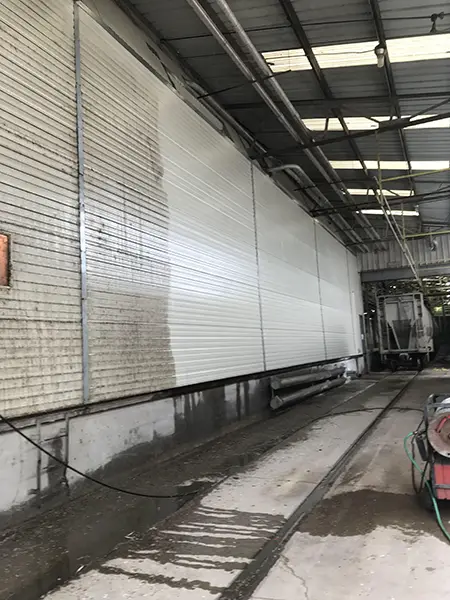
Pressure Washing
Pressure washing in industrial settings involves using high-pressure water jets to remove dirt, grime, and other contaminants from the surfaces of these structures. It is a quick and efficient way to clean large industrial buildings and can be done on the exterior and interior of the building. It is essential to use the proper equipment and techniques to ensure the workers’ safety and the building’s integrity. It is also necessary to consider the environmental impact (EPA Compliant) and to use eco-friendly cleaning products when pressure washing industrial plants, warehouses, and factories.
Two Process Types of Pressure Washing
- Refined Pressure Washing
- The surrounding area, including equipment and machinery, will be protected from backsplash and other contaminants.
- Use of Containment Curtains
- Specialized Nozzles
- Plus all the protection included in Standard Pressure Washing.
- The surrounding area, including equipment and machinery, will be protected from backsplash and other contaminants.
- Standard Pressure Washing
- Protect Electrical Outlets, Switches
- Protect Lights
- Protect Buttons, speakers, alarms
Wet Cleaning
Wet cleaning is mainly for food processing plants and other buildings that deal with our food supply.
- Prerinse – Water, Hose, Sprayer
- Soap and Scrub
- Floor drains get a special brush and cleaner
- Thorough hot water rinse
- Inspect with flashlight and test kits
- The next step would be the sanitation process.
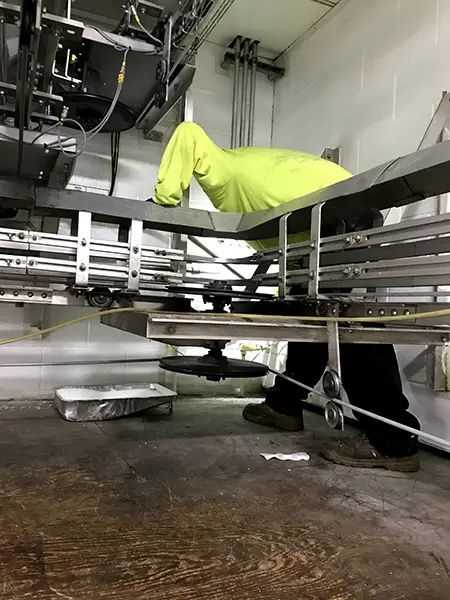
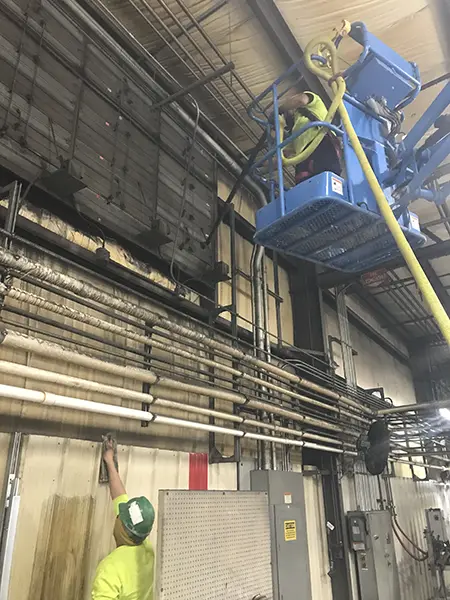
Cleaning by Hand
Hand cleaning walls, machinery, and equipment in an industrial setting involves using various tools and cleaning products to remove dirt, grime, and other contaminants from the surfaces. The tools and products used will depend on the type of machinery and equipment being cleaned and the type of contaminants present. The tools used for hand cleaning in an industrial setting include brushes, scrapers, and rags, and cleaning products include degreasers, solvents, and detergents.
It is vital to use the appropriate tools and cleaning products for certain material types or for the specific machinery or equipment being cleaned and to follow the manufacturer’s recommended cleaning procedures to avoid causing damage. Personal protective equipment (PPE) such as gloves, goggles, and respirators may also be worn to protect workers from potential hazards such as chemical exposure.
It’s also essential to ensure that the machinery is not in operation during the cleaning process to avoid accidents and should be (locked out).
At Recoveron Industrial, we do a lot of hand cleaning. We start with the Vacuum removing all dust and debris and then we start hand cleaning.
- Vacuum
- Hand Cleaning
Wipe Down
Wipe downs are generally used for equipment and machinery that can’t get wet with water. The machinery needs to be degreased from sticky contaminants and old product.
- Industrial Wipe Down
- Wipe Down
- All Contaminates
- Wipe Down
- Food Processing Wipe Down
- Wipe down
- Degrease the sticky product residue from the machinery
- Clean Motors
- Clean Conveyor belts, rollers and frames
- Degrease the sticky product residue from the machinery
- After Wipe Down, the next step is to Sanitize.
- Wipe down
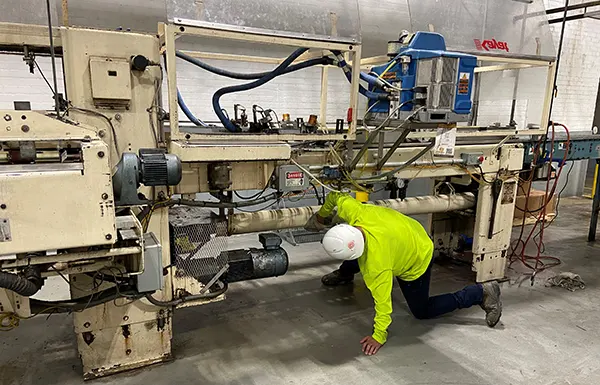
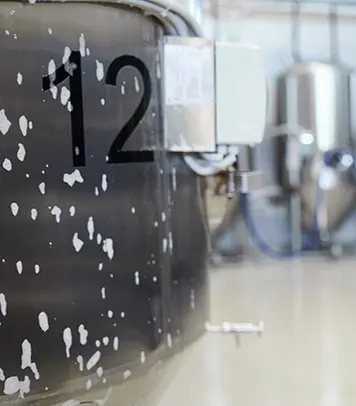
Sanitize
In order to Sanitize, everything must be clean.
